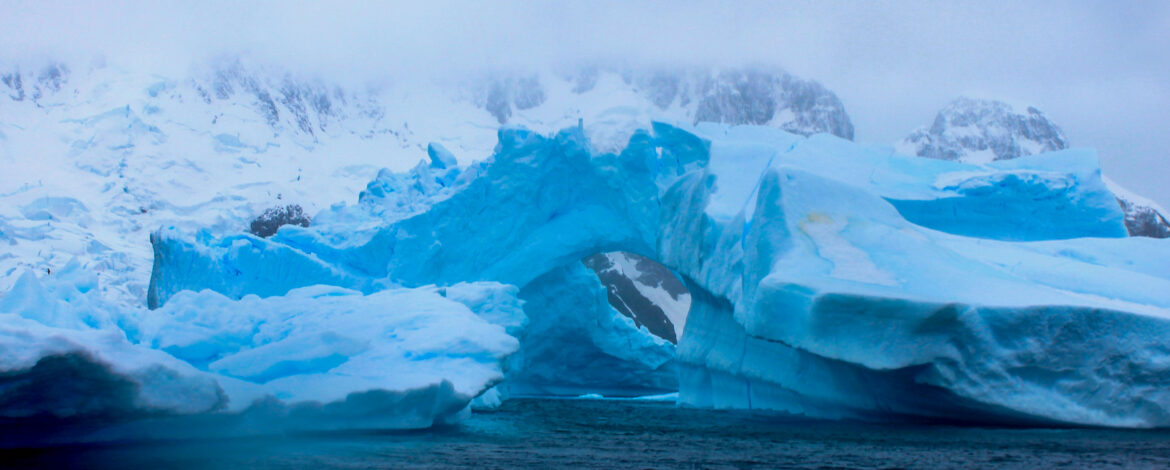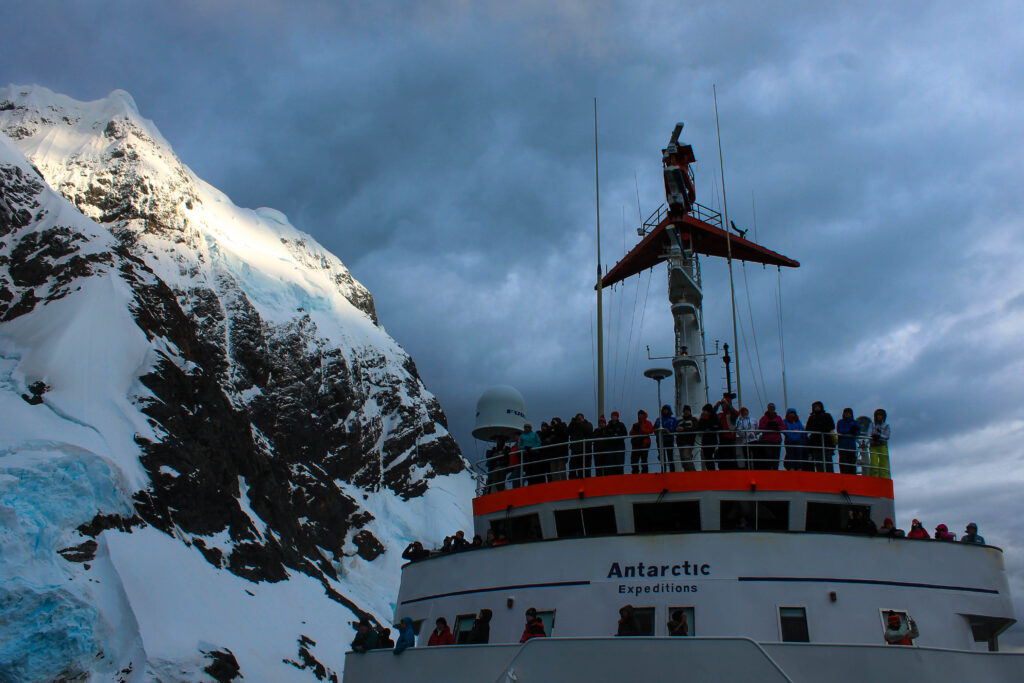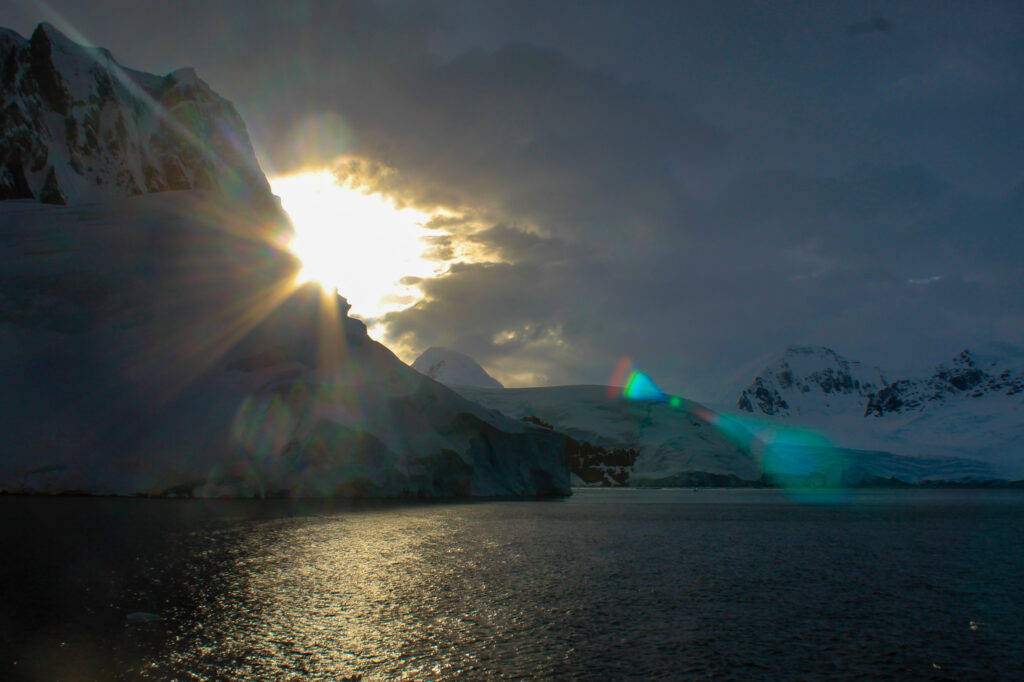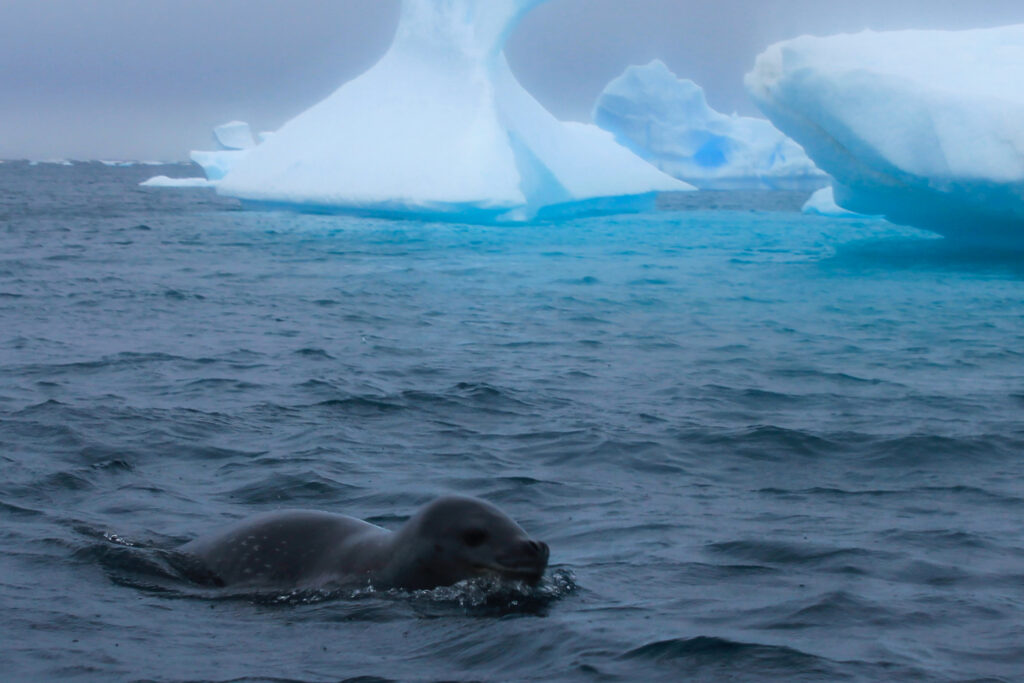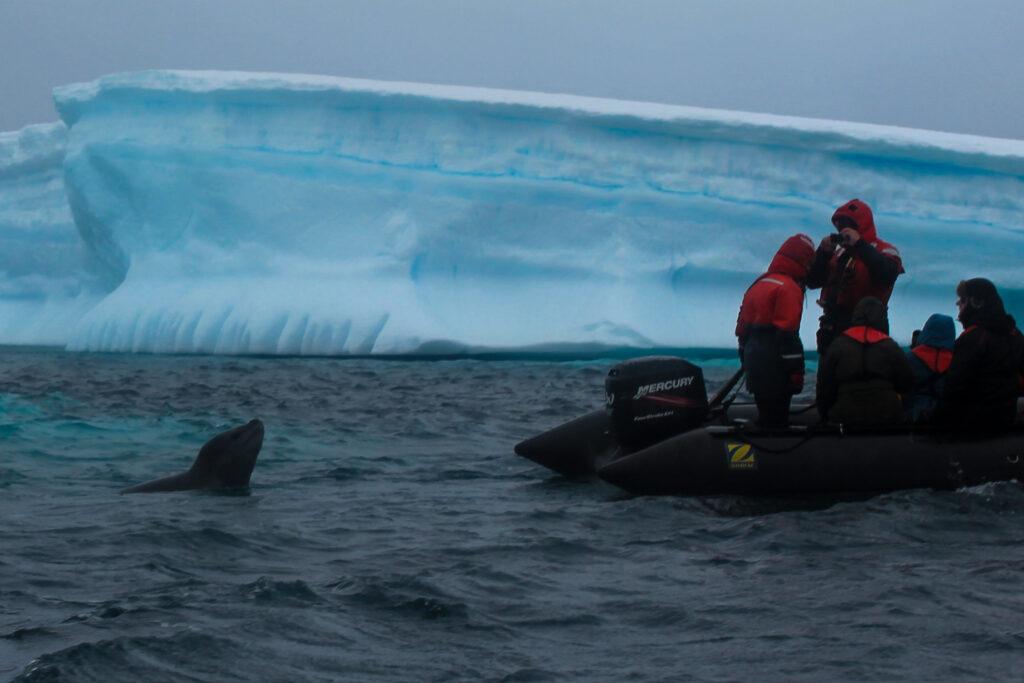We are woken early the next morning to step out on deck to view our path through the Lemaire Channel. Huddling out onto the upper decks wrapped in layers. It was an impressive sight. At the narrowest point the channel is 1 mile wide, with small glacier covered mountains rising up either side. Yet it feels far narrower, the mountains both closer and higher. There’s a certain loss of perspective when set against only rocks and ice, especially when there are no other ships to gauge scale or distance. Icebergs were dodged as the Ushuaia made its way through the calm waters. Vibrant blue, young ice that had recently broken from the glaciers.
.
Someone tells me that “It was worth the price of the trip alone. Don’t you think so?” I hesitate to answer. It’s a beautiful location, but I have the urge to go further south. To where an ice breaker is needed to crack a path through the ice. The accounts of the earliest explorers evoking my imagination.
This channel was first passed through at the very end of the 19th century, by a ship called the Belgica. The same Belgian Antarctic Expedition that named the midge. This was an expedition in the true spirit of international cooperation. Of its passengers, Frederick Cook, an American doctor who would go on to reach the North Pole. And a young Norwegian by the name of Ronald Amundsen needs no further introduction. Just like me, Amundsen was in his mid-20s when he passed through these waters. Yet while after this trip I’d go on to complete my actuarial exams, he went on to do something quite different.
After the straight, the Belgica went much further south, continuing into the Antarctic Circle. The curiosity and the recklessness of the ship’s captain eventually drove them too far into the pack ice, until the ship creaked to a halt, frozen into place. They were poorly equipped, lacking sufficient winter clothing and food for winter. Penguins and seals were killed to overcome hunger, and clothing improvised out of the materials available. Yet there was little available to address the mental degradation once the total darkness of winter began to set in.
Cook famously wrote that: “We are imprisoned in an endless sea of ice… We have told all the tales, real and imaginative, to which we are equal. Time weighs heavily upon us as the darkness slowly advances.” Once it had fully advanced, a night that lasted many months set in, and several men lost their sanity. One even left the ship and walked off into the emptiness – for him, it was the only way back home.
I wondered how much food we’d have to extend our boat’s schedule. But given portion sizes across the eight passengers and 40+ crew, any surplus wouldn’t last long. In comparison to those that rationed through the winter a century ago we’re smothered in comforts. After we go back under deck after it doesn’t take long to warm up, and another fully cooked buffet breakfast awaits us.
We later dock nearby, at a place coined iceberg alley. Here the sea was too cluttered for the Ushuaia to navigate. A loose maze choked with ice. Instead, we must board the zodiacs, the small inflatable boats powered by four-stroke engines ordinarily used to make land. It was cloudy, but many of the icebergs still glowed. With the sun’s light dulled, it seemed like this colour, a translucent blue, shone from within. The shapes were contorted, rotated, and smoothed from weathering. Each one it’s own dreamscape. Some based on something we could recognise. Ledges that jutted out over the water, grand Roman archways, spires, and half pipes. Others had become unrecognisable, like a glass-smith’s mistakes cast away into the ocean and frozen in time.
The rain began to come down, cold against the face, blurring the shots from my camera. But it did nothing to mask the beauty of what we were passing through. There was a cry from one of the group, and an outstretched arm, pointing to an unremarkable spot of water to the side of our boat. And then a splash, as a grey head briefly emerged on the other side. It was a leopard seal, which had taken chase of our boat. Dipping in and out of the water, from one side of the boat to the other. It looked playful, although our guide warned us off. Leopard seals like to play, but only to taunt and tease prey. For sport they’ll chase, cut off, and exhaust penguins, even when not hungry. This female leopard seal considered that we were in her territory, and despite our first impressions, this was aggressive behaviour. They’ve punctured zodiac boats previously. But today she must have felt that her show of defiance and appearance within our camera lenses was enough, as soon she went over to a block of ice, flapping herself into the centre, and laid down.
